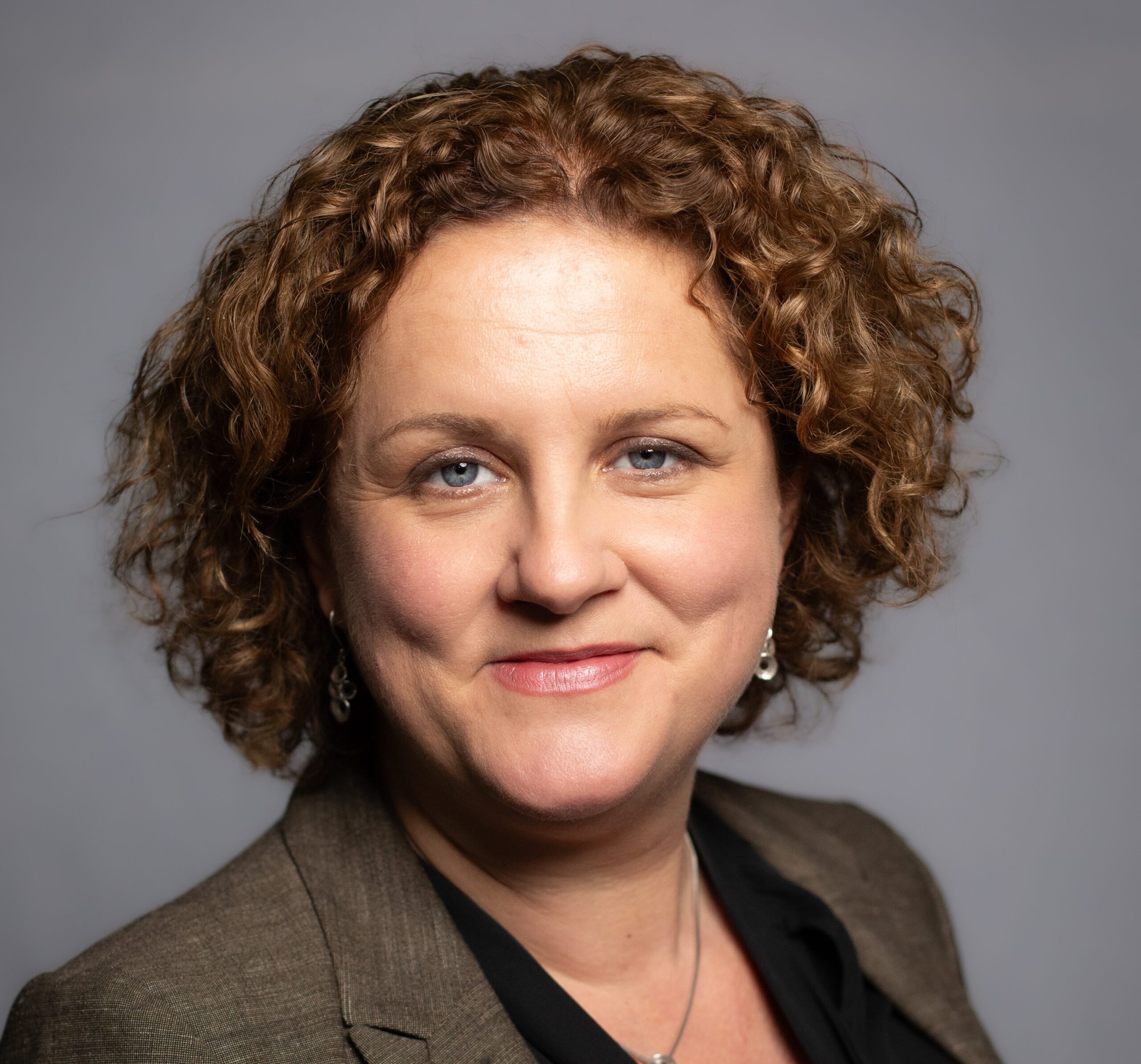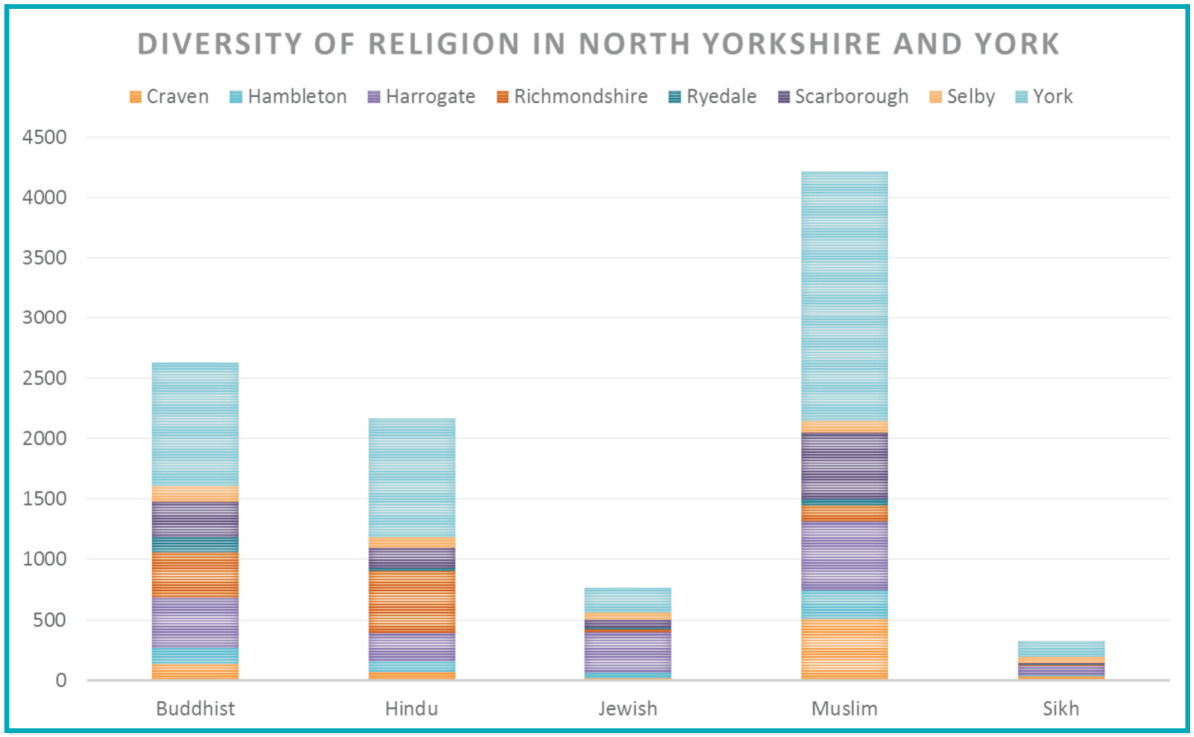Stop Hate Crime – Religion
WARNING:
This report contains offensive language. These are examples of hate crime that were expressed over the course of this research. This language has not been censored as it is important to understand the nature of this type of crime as it occurs.
Translate this page
Increasing cultural diversity means that we are more aware of different religions and cultures than ever before. But there is a lack of understanding of faith, especially where international events, the media and news have highlighted specific religion-associated incidents.
Christianity is the biggest religion of residents in North Yorkshire and York, however, other major world religions are represented, particularly in the more populous areas of the region. The total figures are highlighted in the table below, with a visual, district representation.
| Religion | Volume |
| Christian | 533039 |
| Buddhist | 2625 |
| Hindu | 2164 |
| Jewish | 765 |
| Muslim | 4218 |
| Sikh | 325 |
After Christianity, Islam is the most represented religion in North Yorkshire. It is also the most targeted in terms of hate crime: a new mosque being built in York has raised some local concern and animosity towards local Muslims, increasing levels of hate crime and intolerance.
York has the highest proportion of different religions, however, other districts have unique features. Richmondshire for example, has significant numbers of Buddhists and Hindus (due to the diversity at Catterick Garrison). Hambleton has far less diversity in comparison, but has a larger Buddhist population. Overall, there is a large number of Muslims across the county: this is important due to the changing nature of religious hate crime and growing Islamophobic feeling in some parts of the UK.
Understanding of hate crime
- What does hate crime mean?
There was a high level of ‘expectation’ of hate crime from individuals whose religious identity was visually obvious. There was a good understanding of what hate crime is and why individuals might be targeted.
There was a strong link between ethnicity and religion in many cases: those who were seen to be ethnically, typically Muslim were more easily identified, exacerbated further by religious markers such as headscarves. As a result, Muslim women were targeted more than men because of their cultural dress. Contrastingly, Sikh men were more likely to be wrongly identified as Muslim due to perceived similarities in ethnicity, rather than in dress.
As such, there were strong links between race hate and religious hate due to the visual presence of some religious markers (such as headscarves or Jewish skullcaps).
Relationship with the police
- Did you report the hate crime?
- When you’re going about your day-to-day routine, do you feel safe? Are there any places/times where you feel unsafe or vulnerable?
In Skipton, the Pakistani heritage community is well integrated into the wider community and there is a strong relationship with local PCSOs. By breaking down cultural barriers, the community feels comfortable talking to the police about any problems. This is an example of good practice that should be encouraged across the force as far as possible.
In York, the diverse religious communities felt comfortable with the police and were able to approach them if needed. There was no feeling in any of the groups that the police weren’t good at their job or mistrusted, yet some suggested that some officers were not good at recognising a hate crime and were afraid to ask questions. One individual suggested that officers should feel comfortable with all diverse groups to ask questions about their faith. One respondent argued, ‘there is no such thing as a stupid question… I’d rather they ask than assume.’
Some suggested that social media provided a platform for religious hate crime. Similarly to other online crime incidents, victims or those who felt ‘offended’ by online content did not report to the police because they didn’t know who was responsible or if any action can be taken.
Some older people within these communities (some of which were Black and Minority Ethnic (BME) or Eastern European, too) may have communication difficulties due to language barriers which restrict reporting.
The ‘normality’ of hate crime
- What do you think were the causes or underlying factors of this crime?
- Do you feel like you bare treated at all differently because of any perceived difference between you and others? Is this a ‘norm’?
Reporting in religious communities was low as there was a high level of endurance and almost an expectation that they would be victims of hate crime.
Participants had noticed a change in attitudes towards them, following global events. A Jewish male expressed that people were far less tolerant of him and his religious views after 7/7, even though Judaism had no links to the attack. Others expressed that the extent of news coverage of particular events meant that there were changes in attitudes: the Israel/Palestine conflict was one such example.
Overall lack of public knowledge about Islam in particular, perpetuated prejudices. The Pakistani ladies group that participated in this research define themselves as Muslims. They have noticed a change in hatred aimed towards their religion rather than their race:
‘[Being called a] terrorist hurts. These events affect us too and we get upset like everyone else. When I go into Morrison’s and there are all the headlines on the papers I wonder who has their eyes on me and I put my head down.’
Others suggested that people might make comments to them because ‘they assume we don’t speak English.’ They felt more targeted than Muslim men because their cultural dress visualises their religious identity.
There was less understanding towards those who had converted to Islam, as this was perceived as a conscious choice, rather than having being ‘born into’ the religion. One individual expressed that the ‘White Widow’ gave the perception that converts to Islam were ‘worse’ because of the severity of terrorist attacks. The groups expressed that perceptions of Islam were increasingly based on global events and media reporting and that there was no distinction between Islam and extremism.
‘I’m not a Muslim, but when I wear my full turban, the abuse that I get is like that. God knows what people who are actually Muslims are getting on a regular basis.’ – A Sikh male
The Nepalese community expressed that their religion (Hinduism) attracts questions about festivals and cultural dress. They stated that people do ask questions about their religion: some said that people can assume that they are Muslims but they did not experience negativity as a result.
Conclusion: religious hate crime is endured
The research suggests that some religious hate crime is growing in North Yorkshire and York, but remains underreported. Muslims (or those perceived to be Muslims) are especially at risk due to international events and mass media reporting of radical Islam.
- Diverse groups have no relationship with the police in North Yorkshire and York
The Muslim group in Skipton had a very good relationship with the police, joining in engagement activities and community days. However, Muslims in York and Hindus in Richmondshire felt that the police could be more forthcoming in developing relationships and understanding religious practises.
- There are barriers to reporting hate crime
For some individuals, particularly older people, communication and language barriers could prevent the reporting of hate crime. On the whole, hate was widely recognised as a crime, but for some individuals it was an occurrence that had become consistent over time. There was a lack of awareness of other support groups for those who had become victims, but faith communities were quite close-knit.
- Victims become victims because they are different in some way
Those who conveyed their religion through visual markers or publicly expressed their beliefs were targeted more easily. Muslim women suggested that they were ‘more obvious’ than Muslim men because of their choice of religious dress. Others suggested that where they spoke publicly about their beliefs, they were more likely to receive negative feedback from the public. Evidence from police incident records suggested that assumptions about an individual’s religion based on their perceived ethnicity may be an indicator of difference.
- There is an established ‘norm’
There was a suggestion that faith was an excuse for abuse, or that some faiths were likely to attract more negative attention than others. Due to close links between ethnicity and religion, particularly with Islam, there was a developed sense of being able to ‘put up with’ abuse. Some noticed that hate was now aimed at religion, rather than race, a stark example of this being a white Irish woman who had converted to Islam. One individual explained that religion had always been a ‘point of contention.’
- There is a heightened sensitivity to hate crime
There was a very good overall awareness of hate crime in diverse religious communities, however there was no more positive action to report it amongst faith groups than any other diverse strand.
- Police response to hate crime is poor
There were no comments to suggest that the police were not doing a good job or being unresponsive. Many felt that they could approach the police, and assumed that they would help if needed. Some suggested that better engagement with diverse communities would develop relationships, but understood that the police can’t be ‘everywhere at the same time.’

